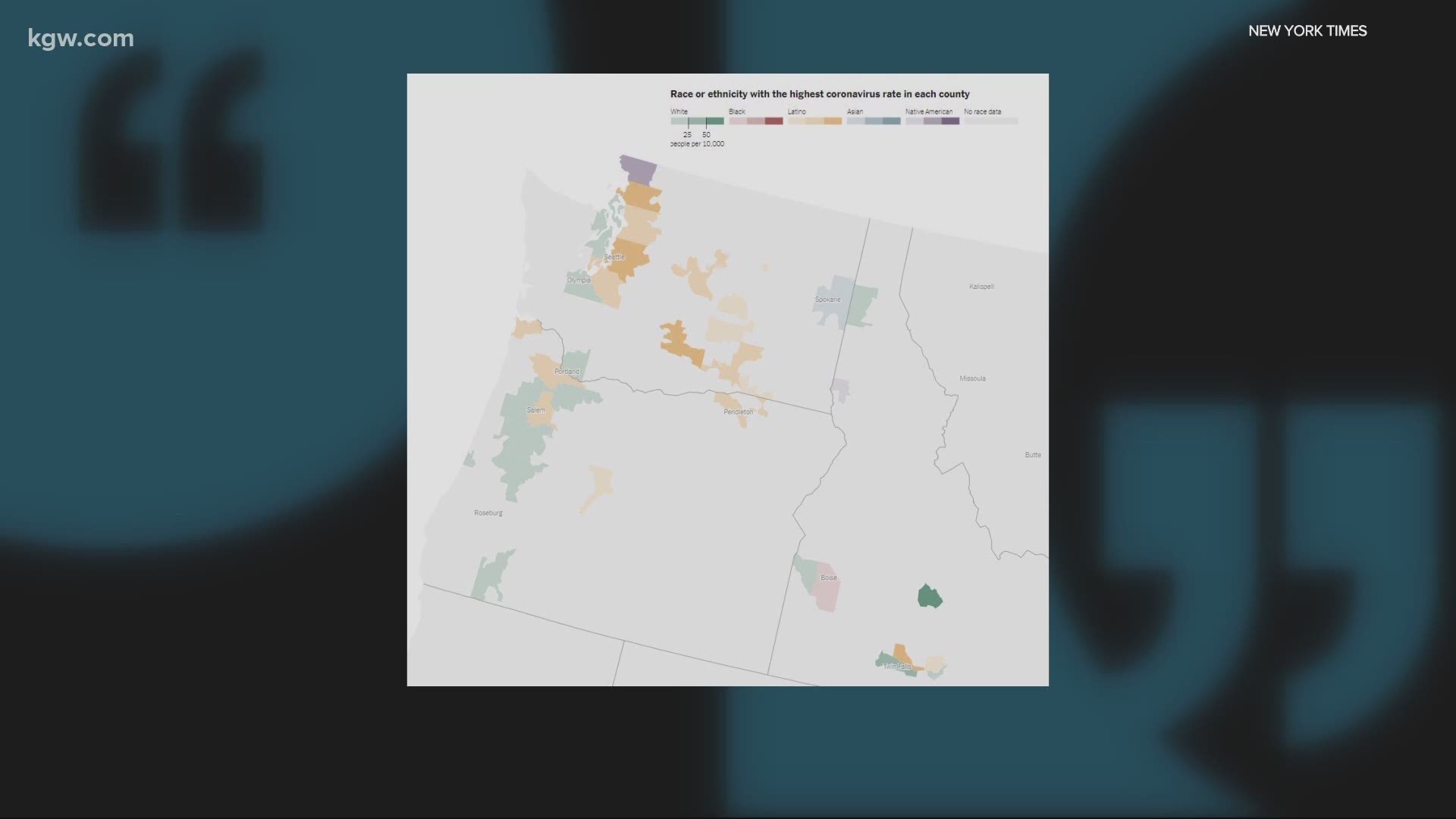PORTLAND, Ore. — It's important to remember that COVID-19 is a novel coronavirus, it’s new. That means health experts are still researching and learning what long-term effects may appear in the future.
KGW talked to Multnomah County Health Officer Dr. Jennifer Vines Tuesday about navigating this evolving pandemic.
“We are definitely in this for the long hall,” Dr. Vines said.
A lot has changed since this global pandemic turned the world upside down, including how doctors and researchers are understanding the virus. From the symptoms and side effects to who is at risk, Vines said there's more to learn every day.
“Initially we thought of this as a fever/cough illness. That's still mostly how we think about it," Vines said. "But the Centers for Disease Control, as we've learned more about specific cases, they have expanded the list of symptoms that could signal infections, and it's very broad.”
On top of a fever, cough, sore throat, or difficulty breathing, potential symptoms have expanded to include:
- Fatigue
- Muscle or body aches
- Headache
- New loss of taste or smell
- Congestion or runny nose
- Nausea or vomiting
- Diarrhea
Although experts are confident COVID-19 is spread like a respiratory virus, through actions like coughing and sneezing, they know the virus can affect nearly every organ in the human body.
“It can affect the lungs. It can affect the heart, the kidneys, liver," Vines said. "It can cause thickening of the blood. So there are several complications of this virus that are not necessarily just the pneumonia or the overwhelming lung infection that you might expect.”
Understanding who is at risk is also evolving.
In Oregon, we're seeing the average age of COVID-19 cases coming down.
The median age for coronavirus cases in Multnomah County was 50 years old in March. Now it's around 30 years old, according to Vines.
She attributes that change to work site outbreaks: younger essential workers catching the virus and then spreading it among their co-workers and social groups.
The symptoms and side effects from the virus on younger populations also runs a wide gamut.
“When I speak to my physician colleagues, some of whom work in intensive care, they describe this virus in younger people as a wild card,” Vines said. “It's hard to predict who, among healthy younger people, might end up with serious disease or serious complications from this infection.”
Even if those younger individuals don't get severely ill, Vines says an increase in cases ups the chances of the virus reaching those who are most at risk for serious illness and death.
“So we worry when we think that the overall burden of the virus in our community is going up because that puts all of us at risk," she said, "but especially our elderly and those with chronic conditions.”
Another factor emerging in all of this is the disproportionate impact coronavirus is having on communities of color.
As of June 12, 2020, age-adjusted hospitalization rates are highest among non-Hispanic American Indian or Alaska Native and non-Hispanic black people, followed by Hispanic or Latino people, according to the CDC.
- Non-Hispanic American Indian or Alaska Native people have a rate approximately 5 times that of non-Hispanic white people
- Non-Hispanic black people have a rate approximately 5 times that of non-Hispanic white people
- Hispanic or Latino people have a rate approximately 4 times that of non-Hispanic white people
“We are not all equally effected by this virus,” Vines said. “And so, we are absolutely seeing disproportionate impacts on African Americans, on Latinx communities, on Indigenous communities, people of color. So the burden is not falling evenly around our community. And really, it’s going to take all of us together to right that particular injustice as we see it though the broader range of social injustices that our country is just now addressing.”
The collective understanding of the virus will continue to change with more research. Staying informed through reliable sources, such as the CDC, World Health Organization and health experts is key, Vines said.
Now more than ever, she said, we need to stay diligent about preventing the spread to keep our families, friends, and neighbors safe.
“What all of us have to do, and be prepared to do, for the next several months is to limit our contact with others, especially indoors, maintain the 6-foot distance and absolutely be wearing a good face covering that covers your face and nose and mouth well,” Vines said.

